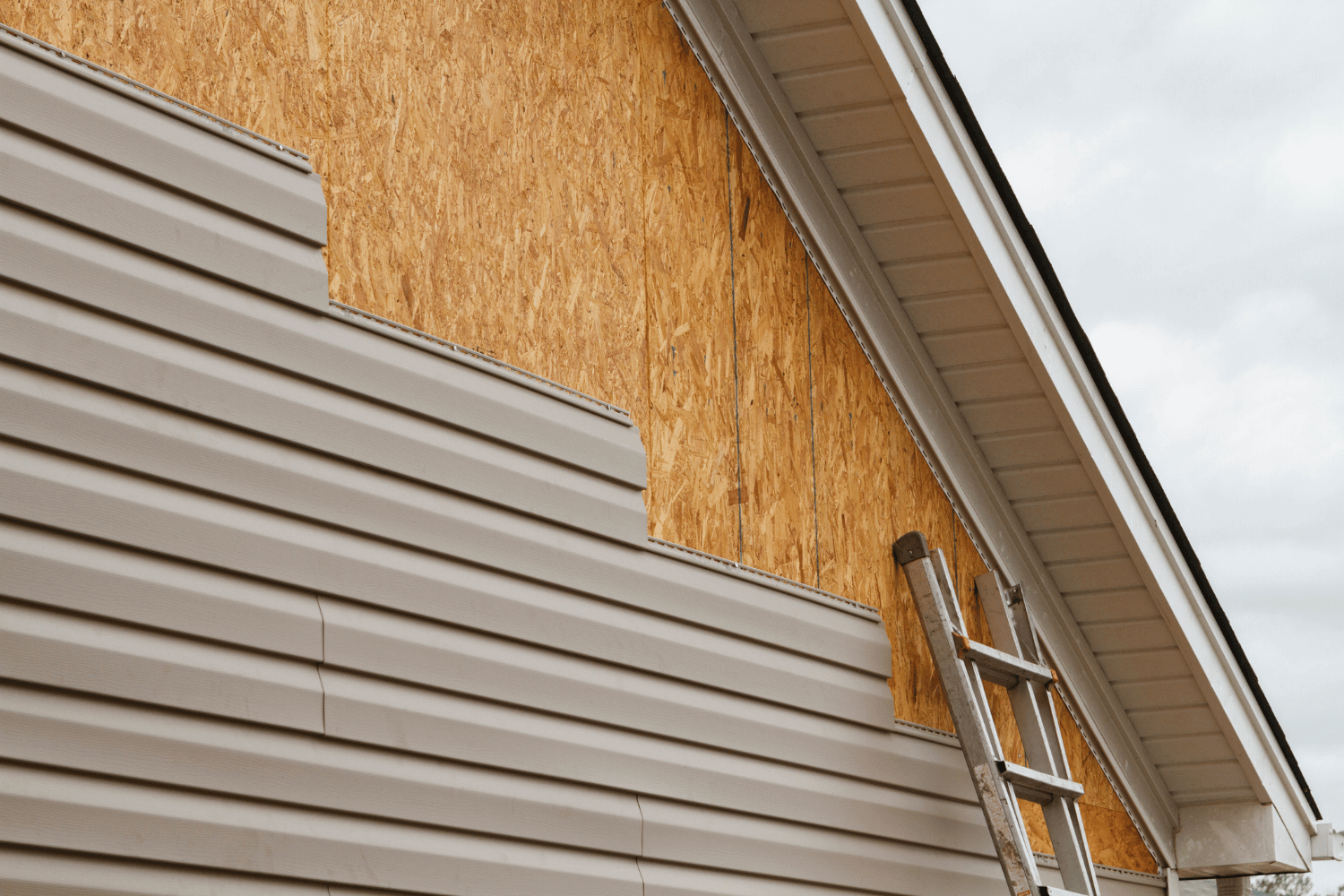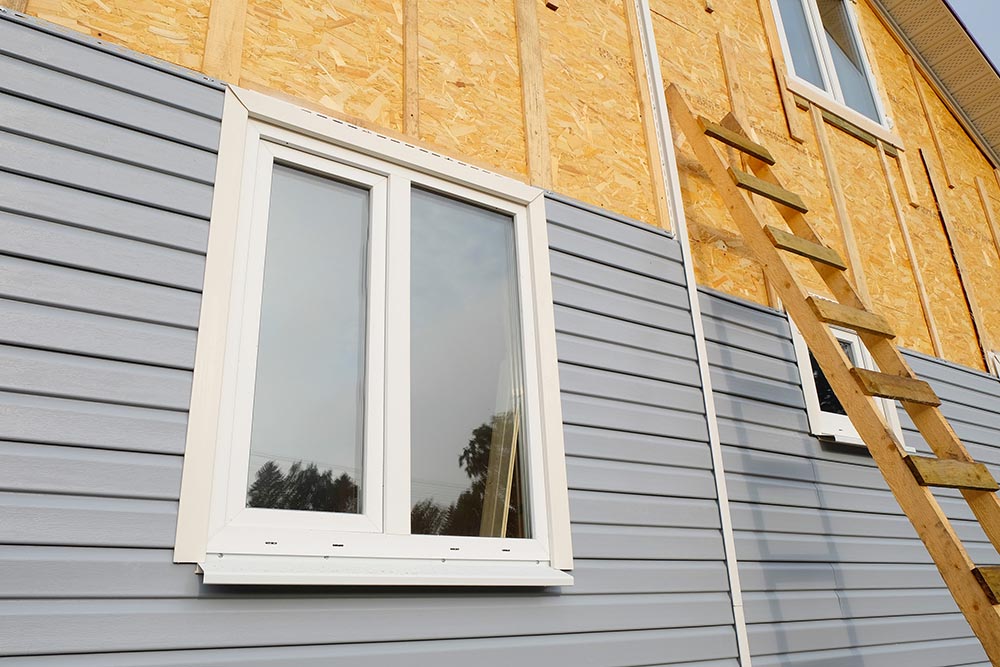Trim and siding services: Guidelines for Hiring a Experienced Siding Expert
Durable home siding: Professional Outside Panel Repair Can Boost Your Home'S Curb Appeal And Safeguard It From Weather Damage
Kinds Of Siding Materials
When it pertains to siding repair, understanding the various types of siding products can make a world of difference. Ever noticed how some homes wear their siding like a badge of honor, while others appear to battle with peeling, breaking, or warping? That's since each material has its own peculiarities and quirks require customized repairs. What are the normal suspects?
1. Vinyl Siding
Vinyl siding is frequently the go-to option for many homeowners due to its cost and low maintenance. But don't let the ease fool you-- vinyl can crack or end up being breakable with time, specifically in cold environments. Have you ever tapped on vinyl siding and heard a hollow sound? That's normally an indication that repair work are creeping in your future. Fortunately? Repairing vinyl generally means replacing just the damaged panels rather than the entire wall.
2. Wood Siding
Wood siding holds a timeless appeal, stimulating pictures of cozy cabins or traditional cottages. It's a double-edged sword; moisture and bugs can turn this charm into an upkeep headache. If you've ever spotted peeling paint or soft spots, you're looking at early indication. Attending to wood siding damage quickly prevents rot from spreading out like wildfire. Keep in mind, a little sanding and caulking can often work wonders, however comprehensive damage may demand full plank replacements.
3. Fiber Cement Siding
Fiber cement is the chameleon of siding materials-- it mimics wood, stone, or stucco with surprising precision. Durable and fire-resistant, it's a preferred among those wanting longevity. Its hard exterior isn't immune to fractures or chips. Repairs frequently include patching and repainting, but beware: inappropriate repairs can lead to water infiltration, the arch-nemesis of all siding. Have you ever seen a little fracture masquerade as safe, only to reveal a soggy nightmare behind the scenes?
4. Metal Siding
Metal siding, whether aluminum or steel, shines with modern appeal and durability. Yet, damages from hail or unintentional effects can mar its surface. Rust is another bad guy prowling if protective coverings wear thin. Timely repairs, including sealing and repainting, can stop deterioration in its tracks. Overlooking these signs? That's like leaving a small hole in a ship's hull and hoping it will not sink.
Typical Indications Indicating Siding Repair Needs
- Cracks or divides in panels
- Fading or peeling paint
- Warping or buckling surfaces
- Soft or rotted areas in wood
- Damages or rust areas on metal
- Loose or missing pieces
Quick Contrast Table of Siding Products
| Product | Resilience | Upkeep | Repair work Intricacy |
|---|---|---|---|
| Vinyl | Moderate | Low | Easy |
| Wood | Variable | High | Moderate to Complex |
| Fiber Cement | High | Moderate | Moderate |
| Metal | High | Moderate | Moderate |
Unraveling one of the most Regular Siding Damage
Have you ever saw the subtle fractures sneaking along your home's outside, just to dismiss them as safe? Those small cracks are often the first whispers of more considerable difficulty. Weather condition's relentless attack-- from hail to scorching sun-- can require siding to warp, split, or even decay.
Secret Offenders Behind Siding Use and Tear
- Wetness Invasion: Water slipping behind siding panels can cause rot and mold, particularly if your home's drain isn't optimum.
- UV Radiation: Sunlight can fade colors and weaken materials, making them fragile over time.
- Physical Impact: From stray baseballs to tree branches, impacts leave damages or holes that jeopardize siding's stability.
- Insect Infestation: Termites and carpenter ants can silently delight in wooden siding, leaving behind structural vulnerabilities.
Identifying Indications Before They Intensify
Think of walking previous your home and spotting a patch where the paint peels like old parchment-- what's truly occurring there? Peeling paint often signals trapped moisture below the surface, recommending that water has actually breached the siding's protective barrier.
Another tricky indicator is contorting. When boards twist or bow, it's not simply a visual defect; it points to extended direct exposure to wetness or heat. Disregarding this can invite insects and speed up decay.
Specialist Tips to Spot and Prevent Hidden Damage
- Routine Assessments: Stroll your home's perimeter every season, looking for loose or cracked panels.
- Tap Screening: A simple knock can expose hollow spots indicating rot or pest activity.
- Preserve Correct Drainage: Ensure seamless gutters direct water far from siding to reduce moisture accumulation.
- Ventilation Matters: Appropriate airflow behind siding avoids condensation that leads to mold and rot.
The Domino Impact of Neglected Siding Damage
Letting a small fracture remain resembles leaving a door open for unwanted visitors. Wetness, pests, and temperature changes make use of these vulnerabilities, turning little repair work into extensive remediation tasks. As soon as paint peels and wood warps, the underlying structure typically suffers quietly, hidden from plain view but screaming in requirement of attention.
Essential Tools for Accuracy in Siding Repair Work
When taking on siding repair work, the here right tools transform a complicated job into a workable project. Picture trying to pry off damaged siding with a screwdriver-- discouraging, ineffective, and most likely to cause more harm than excellent. Instead, a feline's paw or a specialized siding removal tool slides beneath the boards with ease, sparing the surrounding material.
Here's a compact toolbox every property owner or expert must have:
- Energy knife: For scoring and cutting vinyl or fiber cement siding with surgical precision.
- Hammer and lever: Vital for carefully getting rid of nails and separating boards without splintering.
- Caulking weapon: To seal spaces and avoid water seepage, due to the fact that wetness is the quiet opponent of any siding.
- Measuring tape and chalk line: For precise cuts and alignment-- nothing screams 'amateur' like uneven siding.
- Power drill: Speeds up attaching and can be paired with a range of bits to deal with various siding products.
- Level: Ensures your siding sits perfectly directly, preventing those subtle angles that turn into eyesores over time.

Materials That Make or Break Your Repair work
Selecting the best products isn't almost matching colors or designs; it's about durability and compatibility. Vinyl siding replacement panels, wood planks, fiber cement boards-- all have unique attributes that demand regard.
Ever tried to patch an area with mismatched material? It's like patching a hole in a canvas with paper-- temporary and visually disconcerting. Here's a fast rundown of what to think about:
| Product Type | Finest Usage | Key Attributes |
|---|---|---|
| Vinyl | Residential homes with moderate weather condition direct exposure | Low maintenance, colorfast, however can break in extreme cold |
| Wood | Standard or rustic visual appeals | Requires routine sealing; susceptible to rot and bugs if ignored |
| Fiber Cement | Durable choice for high-moisture environments | Fireproof, heavy, needs carbide-tipped tools for cutting |
Professional Tips for Product Handling and Installation
Here's a nugget numerous ignore: always acclimate fiber cement siding before installation. Let those panels being in the environment where they'll be installed for a minimum of two days. This simple action avoids warping and makes sure a snug fit.
Never ignore the power of a well-placed bead of top quality outside caulk. This can prevent the insidious creep of moisture behind the siding-- moisture that welcomes mold, mildew, and ultimate structural decay.
One final thought: when getting rid of damaged siding, safeguard underlying insulation and sheathing. A gentle touch here conserves hours of additional work and money down the line.
Step-by-Step Repair Process
Ever discovered a stubborn fracture slipping through your siding, whispering tales of water intrusion? It's not just an eyesore-- it's an open invitation to rot and mold. Disregarding it can turn a minor fix into a colossal headache. Let's break down the procedure of siding repair with precision and care.
1. Evaluation and Preparation
First, don't hurry to swindle panels. Start with a precise examination. Search for warping, loose nails, and hidden moisture beneath the siding. Use a moisture meter if you can-- it's a professional's ace in the hole. Preparation means more than simply clearing debris; it involves securing nearby plants and surfaces from dust and paint.
2. Getting Rid Of Damaged Areas
Here's where the skill is available in. Pry off broken sections carefully, avoiding damage to surrounding pieces. A siding elimination tool or zip tool can make this a breeze, preventing unnecessary damage. Remember, the objective is to preserve the stability of the structure underneath.

3. Cutting and Fitting Replacement Panels
Precision is everything. Step two times, cut as soon as. When cutting replacement siding, a little bevel the edges to ensure water sheds correctly. This little information frequently gets neglected but can avoid future water damage. Stagger the seams to mimic the original pattern for a smooth appearance.
4. Protecting and Sealing
Usage galvanized nails to prevent rust, and never ever drive nails too tight; allow some wiggle room for growth. Sealing is your last guardian-- use a premium, paintable caulk around edges and joints. This obstructs moisture and keeps insects at bay. Remember, even the tiniest gap can become an entrance for damage.
Expert Tips
- Always repair siding on a dry, mild day-- humidity can affect paint adhesion and caulk treating.
- Utilize a level to ensure each panel aligns perfectly; crooked siding is more than a visual flaw-- it signifies potential structural concerns.
- Keep a replacement panel or more on hand for future quick fixes-- nothing beats preparedness.
Common Mistakes to Prevent
| Error | Why It Matters | Pro Suggestions |
|---|---|---|
| Overdriving nails | Limits siding growth, triggering buckling | Leave about 1/32 inch clearance between nail head and siding |
| Skipping moisture check | Missed water damage results in hidden rot | Use wetness meter before installation |
| Neglecting flashing | Water permeates behind siding, causing decay | Examine and fix flashing throughout siding replacement |
Have you ever questioned why some siding repairs stop working within months? The devil lies in the information: improper sealing, reckless nailing, or overlooking moisture concerns. When executed with knowledge, siding repair not only restores your home's appeal but fortifies it against the components for several years to come.